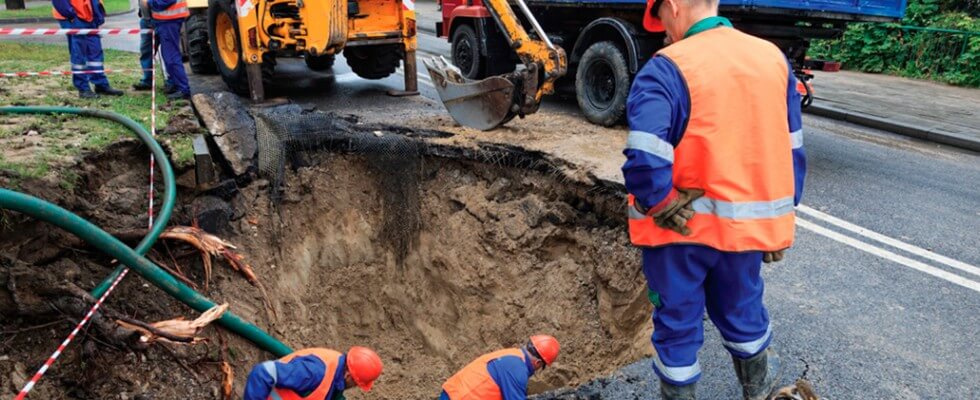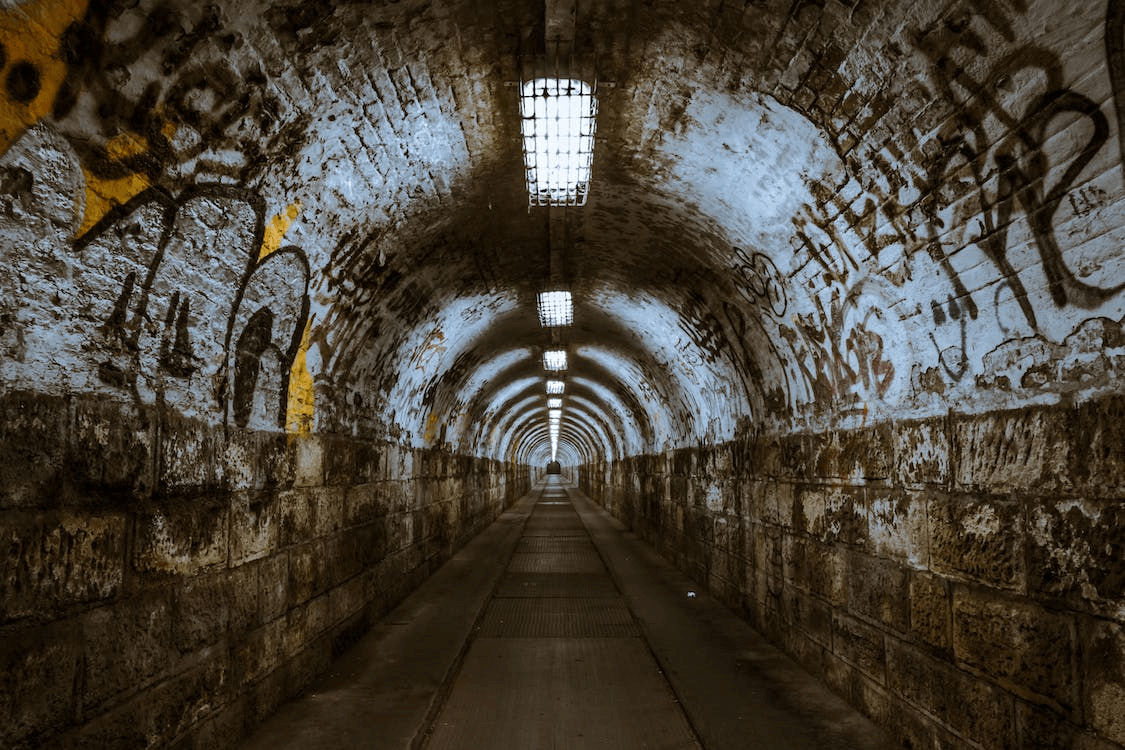
Digging without knowing what lies beneath can be like playing a game of Jenga with the infrastructure that keeps our world ticking. Unearthing underground utilities without an understanding of what lies beneath can be a costly and dangerous endeavour. In this article, we will explore how to locate underground utilities with minimal damage and disruption – allowing us to pull out the Jenga pieces safely.
The task of finding buried pipes, cables, and other objects is complex and requires specialised knowledge combined with the use of appropriate technologies. By relying on a combination of traditional surveying techniques and modern detection methods such as ground penetrating radar (GPR), it is possible to identify and map underground utilities with relative accuracy.
As well as providing answers about the location of buried elements, GPR also offers valuable information about their condition – for example, if they are corroded or have leaks – thus helping to reduce repair costs in the long term. In this article, we will discuss the best practices for locating buried utilities with minimal disruption while ensuring maximum safety for personnel involved in the process.
1. Understanding Utility Markings
Over recent years, the importance of correctly locating underground utilities has become increasingly vital. According to the National Utility Locating Contractors Alliance (NULCA), nearly one-third of all excavation damages are caused by poor underground utility locations. This highlights the need for effective methods that allow for minimal disruption and damage when locating these facilities.
One of the most important steps in safely and accurately locating underground utilities is understanding Utility Marking Symbols. These markings indicate where a given utility exists and can be found on manhole covers, street signs, traffic signals, warning tapes, or even painted lines on roads.
Once these marks have been identified, they can help determine what type of utility is present and how deep it runs below ground level. Knowing this information is essential in helping to avoid any potential damage during excavation work. Additionally, many municipalities have laws regarding the marking of utilities that must be adhered to in order to ensure safety.
It is also important to note that newer technologies such as GPS mapping and ground-penetrating radar (GPR) can be used as an alternative to manual marking when locating underground utilities. These technologies provide a much more precise view of where a given utility may lie and are quickly becoming the standard for minimising disruption and damage when locating utilities.
2. Using Utility Markers
Time is of the essence when it comes to locating underground utilities with minimal damage and disruption. Every second counts, as even a slight mistake can cause extensive problems. To ensure this doesn’t happen, utility markers are used as a reliable source of information.
Utility markers are placed on top of the ground, indicating the location and type of utility below. These markers are usually made from metal or plastic and contain information such as company name, phone number and service type. They are usually placed at regular intervals along a route or at points where new utilities have been installed.
By using these markers, any potential issues can be identified quickly and easily with minimal disruption for both the contractor and nearby residents. Furthermore, they provide an accurate map that allows for precise measurements to be taken before any digging takes place.
The use of utility markers is essential in obtaining accurate information about underground utilities in order to maintain safety and reduce damage during excavation work. With their help, contractors can accurately plan projects in advance and avoid any costly mistakes which could cost time, money and lives if not done correctly.
3. Researching Utility Records
A wise man once said, “Failing to plan, planning to fail.” This adage applies well when it comes to locating underground utilities with minimal damage and disruption. Researching utility records is one of the most important steps in this process.
The research process begins with identifying the types of utilities that need to be located. Records of these utilities are often maintained by municipalities and organisations responsible for their installation and maintenance.
In some cases, a professional engineering firm may have been involved in the installation as well as mapping of these utilities. It is important to contact all relevant organisations and parties to ensure that all information is collected accurately and comprehensively.
Once all necessary information has been gathered, it can then be used to create a map or plan that shows the exact locations of each underground utility line. This will help workers avoid any potential damage or disruption when digging or otherwise accessing the lines.
Additionally, having an accurate map of the utilities will make it easier for workers to find them quickly and safely if repairs or modifications need to be made in the future. Taking the time upfront for proper research will save time, energy, and money in the long run by reducing potential risks associated with improper excavation or work near underground utilities.
4. Utilising Utility Locators
Utilising utility locators is an important tool in the process of locating underground utilities with minimal damage and disruption. As a recent case at an industrial plant in Pennsylvania illustrates, this type of technology can save time, money, and potential liability costs.
The plant was constructing a new addition to its facility but needed to know the location of underground utilities before they began digging. After researching utility records and surveying the area with ground-penetrating radar, they decided to utilise utility locators.
These devices work by sending electromagnetic signals into the ground that can be detected by receivers connected to pipes or cables. This data is then relayed to technicians who can accurately pinpoint the location of the utilities within inches.
The plant was able to quickly locate all of its underground utilities without having to excavate large sections of the earth, which saved them time and money on their project while avoiding any potential lawsuits or fines from damaged or disrupted underground services.
5. Identifying Existing Utility Lines
According to a recent survey, up to 48% of excavation-related incidents involve damage to underground utilities. As such, identifying existing utility lines is essential for avoiding costly and potentially dangerous incidents. A variety of methods can be used for this purpose, including the use of non-destructive testing techniques such as ground-penetrating radar, acoustic imaging and electromagnetic induction.
These techniques allow companies to accurately identify the exact locations and depths of buried utilities without causing any disruption or damage. Additionally, a visual inspection can be used to detect the presence of utility lines through their surface markers. By combining all these methods, it is possible to accurately locate any underground utilities with minimal disruption or damage.
6. Ground Penetrating Radar
Ground penetrating radar (GPR) is a non-destructive method used to locate underground utilities. The technology consists of a transmitting antenna, which sends out electromagnetic pulses, and a receiving antenna, which receives the reflected signals. GPR is used to identify subsurface features such as utility lines, pipes and cables. It can also be used to determine the depth of these features.
GPR has several advantages over traditional methods of locating underground utilities. It can detect objects that are not visible on the surface or in other forms of detection, such as metal detectors or magnetometers.
In addition, GPR does not require access to an area for excavation, making it ideal for use in urban areas with limited space and high levels of disruption. Furthermore, GPR is fast and efficient, providing results in real time without causing any significant damage or disruption to the site.

7. Employing Professional Services
Using professional services to locate underground utilities is akin to getting directions from a reliable guide on a journey. By enlisting the help of professionals, such as engineers and utility locators, the work can be done with minimal damage and disruption. These experts have experience in detecting and locating utilities in an accurate manner.
They utilise state-of-the-art equipment that can detect both metallic and non-metallic components up to several feet below the surface. This technology is effective for different types of underground installations, including gas lines, water pumps, sewer mains and electrical cables.
The professionals are also knowledgeable of local regulations regarding working in the vicinity of these components. As such, they are able to provide the necessary safety measures to ensure that any excavation work is done properly and safely.
Furthermore, engaging professional services could save time and money as they can accurately identify where the utility lines are located without unnecessary digging or disruption. This helps reduce the risk of damaging any existing infrastructure while ensuring efficiency in completing a project on schedule.
Conclusion
The task of locating underground utilities is no easy feat. It requires a combination of understanding utility markings and markers, researching utility records, utilising locators and radar, and employing professional services.
Much like a jigsaw puzzle, each piece is important in order to create the full picture. This ensures that all underground utilities are accurately identified with minimal damage and disruption.
Ground penetrating radar (GPR) is an invaluable tool that provides an accurate picture of what lies beneath the surface. Through its use of electromagnetic waves, GPR can detect objects such as pipes and cables, allowing for precise mapping of underground infrastructure. As with any tool, however, it needs to be used correctly and by experienced professionals in order to get the most accurate results.
Overall, when looking for underground utilities, it’s important to remember that safety comes first. Taking the time to properly locate utilities helps ensure that all work is done efficiently with minimal harm to people or property. Finding these buried treasures is like searching for sunken treasure – it takes dedication to uncover them without disrupting the surrounding environment.
Alex Jordan
Related posts
Stay connected
- How LoveOn Chat Is Becoming the Most Versatile AI Companion for Digital UsersThe internet keeps shifting toward hyper-personal interaction, and AI companions are at the center of this shift. What used to be simple chatbots are now evolving into emotionally aware, adaptive, and multi-functional digital partners. Among the new generation of platforms, LoveOn Chat is becoming one... The post How LoveOn Chat Is Becoming the Most Versatile […]
